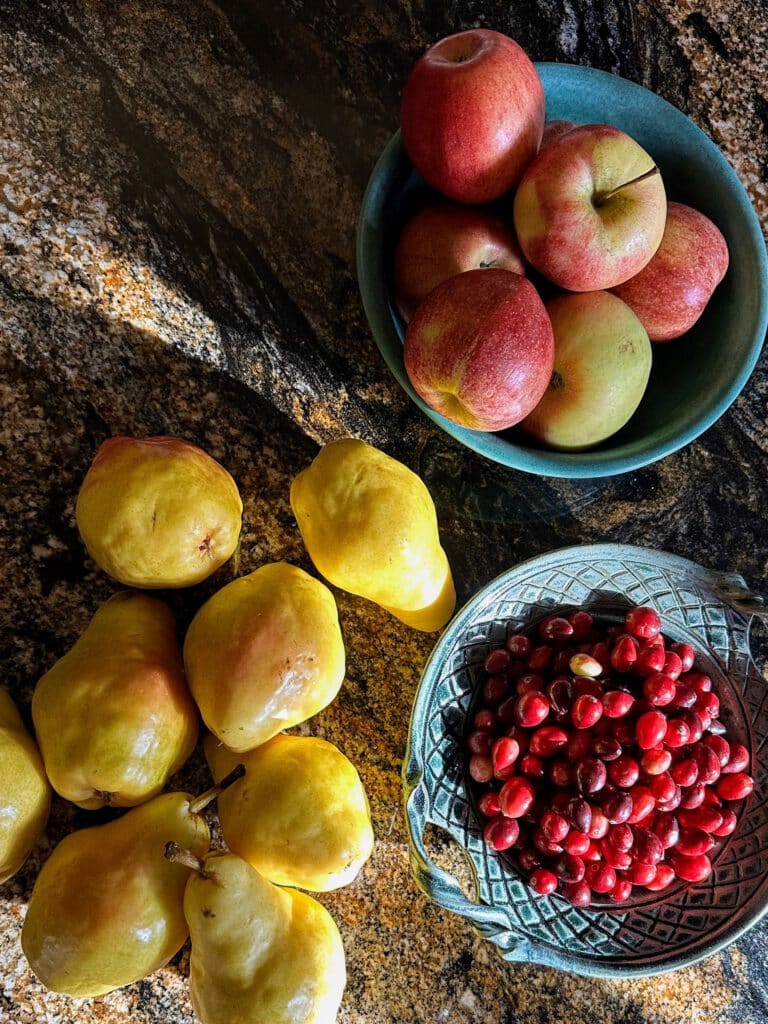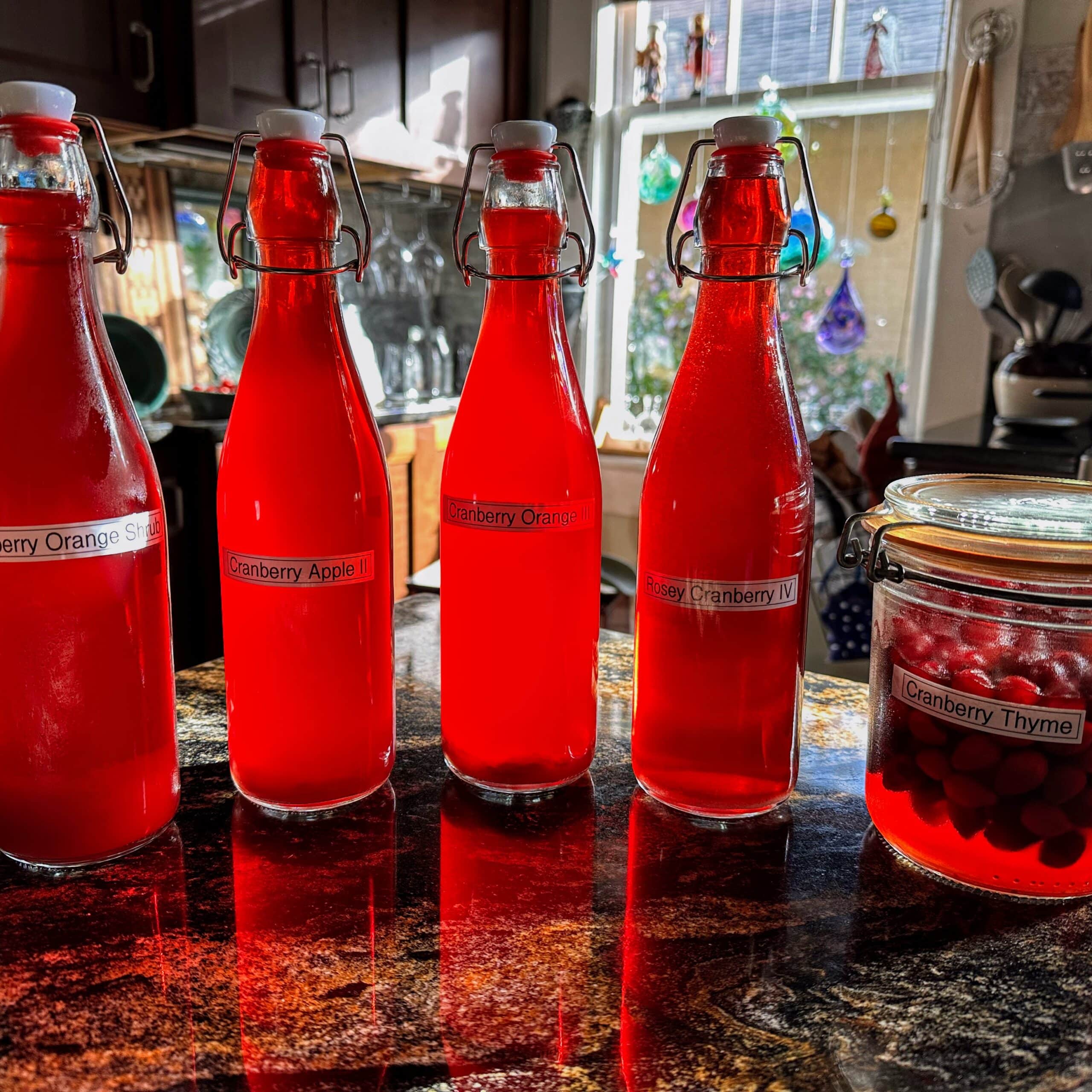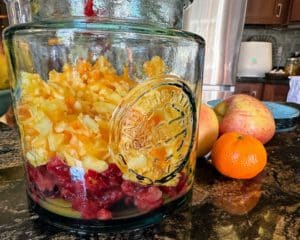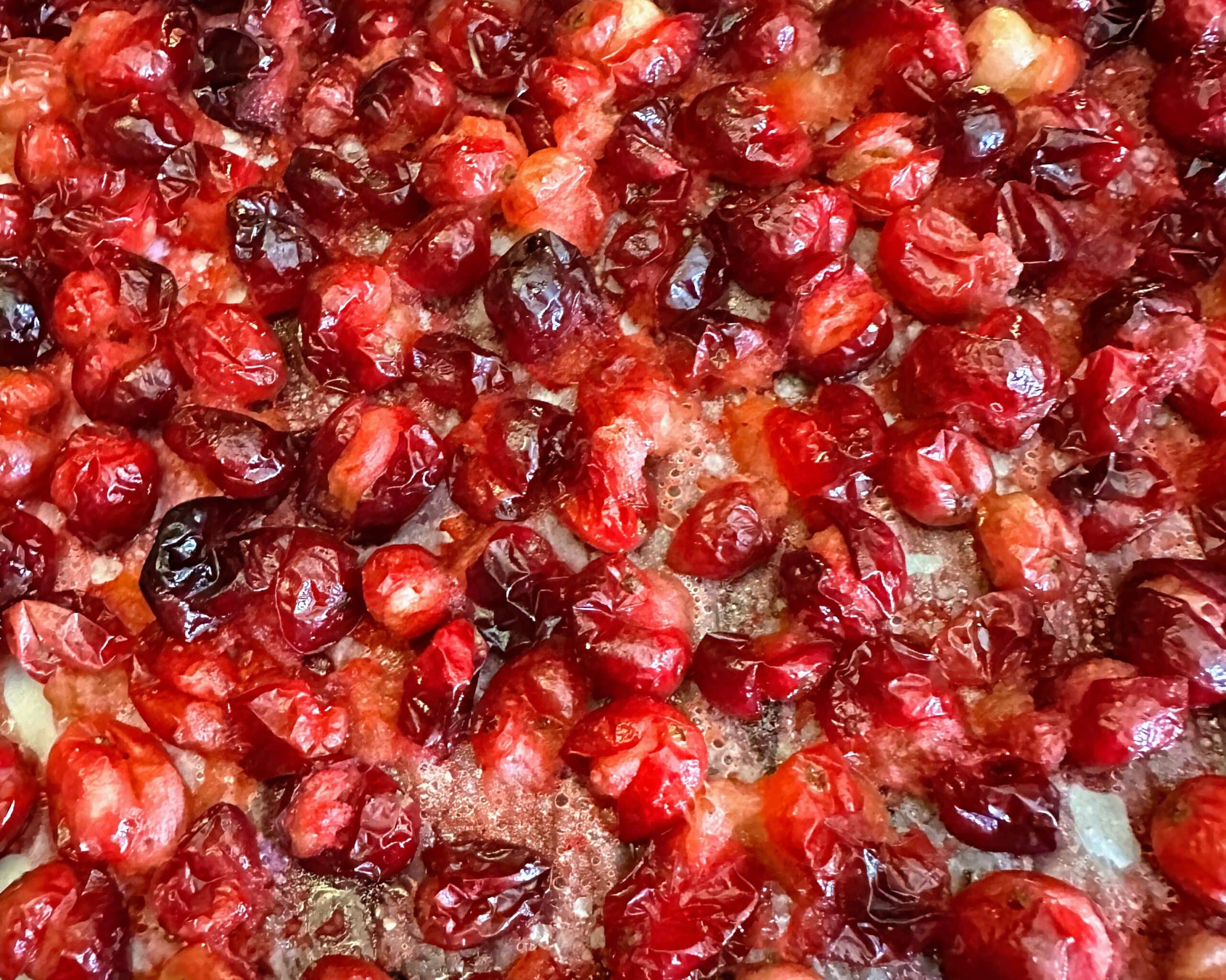Shrubs…an Ongoing Inquiry into Deliciousness
Follow up on Cranberries Five Ways
A Review of my empirical research:)

Being the nerdy researcher and scientist that I am, I made and remade cranberry shrubs using these five methods so I could figure out why they work when they work and why they don’t when they don’t. Here are the results of my experimentation in order of my preference.

My Top Choice
My Top Choice: Method V
Cranberry Thyme using Martha’s Method
This was by far my favorite in terms of ease, flavor, and visual appeal. I made it twice–the first time I thought I was following the procedure as written, but I actually did cook it more than the recipe indicated. (I turned around to get something, got distracted, and forgot I had the shrub over the heat until I heard one of the cranberries pop!) I immediately turned off the heat and proceeded.
It was perfect.
I made it a second time following the procedure by the book—just heating it enough to dissolve the sugar)—to be sure that I could replicate it. I couldn’t. After 2 days in the jar, the mixture was still a very pale pink. Not pretty at all. And it didn’t taste very cranberry-y.
So I poured it back into a pan, put it over the heat and waited for one of the cranberries to pop and let it cool before putting it back into the jar. MUCH better. Better color, better flavor, prettier. I will make this note on the recipe to reflect this; it is now Martha’s Method with a popped cranberry or two.
Oh, and the second thing I learned from this recipe is that white wine vinegar is the best vinegar to use with cranberries. They are tart, it has a bit of sweetness and depth that just work.
My Second Choice
Second: Method III
Cranberry Orange Shrub with Rosemary

In this method, the berries are chopped before adding the sugar and letting it juice off a couple of days.
Again, a really easy process with extremely tasty and visually appealing results. I pulsed the berries in a blender, then pulsed the oranges. Next time I think I will chop the oranges with a knife and use the muddler on them to keep them a bit more intact.
In my experience, the cold process methods are all preferable to cooking because cold processing yields a product that is much easier to process (i.e., strain) to get juice.
My Third Choice
Third: Method IV
Rosey Cranberry Shrub
This method calls for soaking the cranberries in vinegar for a few days before adding the sugar. Again, I made this one according to the recipe I found on the interwebs but found that I had to make some adjustments to the process to get it to work.
First off, I left those little berries in the vinegar for a good four days and tasted and couldn’t tell that the cranberries were releasing anything into the vinegar. So I tried mashing them a bit. Not very successfully, but I did manage to bruise them up enough to release some flavor into the mix. I left them for another four days and strained them into a bottle.
It’s good. And like the other two shrubs above, bottling was a snap because there really wasn’t any sediment to make it hard to strain before bottling.
When I make it again, I’ll pulse the cranberries in the blender before adding the vinegar. I think that should make the juicing with vinegar process much more effective.

My Fourth Choice
Fourth: Method II
Spiced Cranberry Apple Shrub
This method involves baking the cranberries before shrubbing them. While this was my least favorite method, the flavor is fantastic. I used a combination of spices and both cider vinegar and white balsamic. And I do think the flavor of the baked cranberries is pretty great.
What I didn’t like about this method was its difficulty relative to the cold process shrubs. First had to do with baking the cranberries and cleaning up after that, and second, straining the juice before bottling. Because the fruit was pretty mushy, it was hard to strain without quite a lot of sediment getting into the mix.
If I try this again, I’ll bake them just enough to soften them–maybe 10 minutes instead of 20, to see whether that makes the final step easier. As I said, the flavor was fantastic!
Fifth: Method I
Cranberry Orange with Rosemary

I used the same ingredients I used for Method III, but used a HOT process: everything goes into a pan, gets simmered, then strained and bottled.
The pros were that it is super easy to prepare and ready to use immediately. But the pros did not outweigh the cons for me. Again, because the fruit was cooked and mushy, it was really hard to strain out the juice without getting a lot of sediment. I had a hard (really hard) time leaving behind so much juice and tossing the fruit. I might try it again and cook it half as long so the fruit doesn’t get so mushy. But I’m not sure what that will do to the flavor…? Because I really do like the flavor of cooked cranberries.